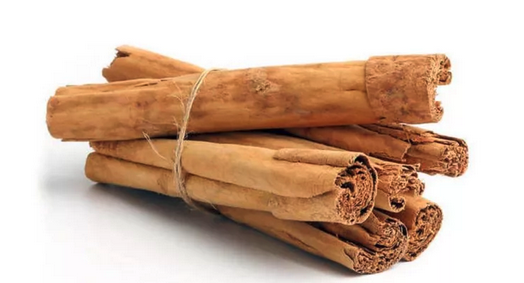With whiffs of vanilla, honey and florals, it’s perfect for sweet or savoray dishes
by Janet Blaser
If you’ve noticed that the cinnamon here in Mexico tastes different than what you’re used to in Canada or the United States, you would be correct. Canela (Mexican or Ceylon cinnamon) is not the same variety as cassia cinnamon — what’s commonly sold and used in those other countries.
Both come from the inner bark of several varieties of tropical bushes and trees native to Southeast Asia. Cinnamomum verum, what’s sold in Mexico, is often thought of as “true” cinnamon because of its distinct flavor profile and ability to enhance rather than overpower a dish.
Perhaps you’ve noticed the difference in taste; canela is milder and more floral, not as brash or as spicy, and with a more complex flavor that makes it better suited for savory dishes. In Mexican cuisine, it plays a part in moles, marinades and bean dishes, its subtle heat and warm flavor adding complexity and richness. And, of course, it’s used widely in sweets: horchata, rice pudding, dulce de leche and Mexican hot chocolate.
You can find canela as whole sticks (known as quills) or ground into a powder. Mexican cinnamon quills are thin, delicate and quite fragile; the bark curls around itself and crumbles easily. It’s very difficult to grind it yourself, so I’d suggest you choose the form most suited to the recipe.
I’ve selected some unusual recipes here that use cinnamon; you can easily find more common ones online.
Cinnamon Tamarind Margarita
For the serving glass rim:
- 1 tsp. sugar
- 1 tsp. salt
- ½ tsp. cayenne
- ½ tsp. ground cinnamon
- 2 Tbsp. freshly squeezed lime juice
For the cocktail:
- ¾ oz. tamarind concentrate
- 2 oz. blanco or reposado tequila
- 1¼ oz. freshly squeezed lime juice
- ½ oz. simple syrup
- ½ oz. freshly squeezed lemon juice
- ¼ oz. Cointreau
- Ice
- Garnish: cinnamon stick, lime wedges
Preparing the rim: Mix sugar, salt, cayenne and cinnamon in a small bowl; pour onto a saucer. Pour lime juice onto second saucer. Turn serving glass (martini glass or old-fashioned) in lime juice to wet the outer rim; spin glass in cayenne mixture, rotating slowly to coat.
Coffee-Cinnamon Horchata
- ⅓ cup long-grain rice, white or brown
- ⅔ cup raw almonds
- 2 Tbs. whole dark-roast coffee beans (or whatever you have on hand, really)
- One 2-inch cinnamon stick, broken in half
- 3 cups hot water (not boiling)
- 1 cup cold water
- 4 Tbs. honey or agave syrup
Add almonds, rice, coffee beans, cinnamon stick and hot water to a blender. Process on high for 1 minute. (Make sure lid is on tightly!)
Pour into a jar or other covered container; let soak overnight at room temperature.
The next day, put the blended liquid back into the blender; add the cold water. Process on high for 2 minutes.
Over a big bowl, strain the re-blended liquid through a fine-mesh strainer, lined with cheesecloth if you have it. Whisk agave or honey into the horchata. Serve over ice.
Store remaining horchata in fridge for up to a week. Shake before serving again.
Cinnamon Rice
- 1 medium onion, chopped
- 3 garlic cloves, minced
- ¾ tsp. cumin seeds
- One 3-inch cinnamon stick (whole)
- 2 Tbsp. olive oil
- 1½ cups long-grain white rice
- 2¼ cups chicken broth
- ¾ tsp. sugar
- ¾ tsp. black pepper
- 1 tsp. salt
For garnish:
- ¼ cup unsalted pepitas
- 1 plum tomato, diced
- ½ cup minced fresh cilantro or parsley
- ½ cup queso fresco, crumbled
To make the hash: heat large skillet over medium-high heat. Add oil, sweet potato, oregano and ½ tsp. salt; cook 3 minutes, stirring. Add cumin, cinnamon, red pepper and garlic, then ½ cup water. Cover, reduce heat, cook 5 minutes.
Uncover; stir and cook 2 minutes more. Remove from heat.
To make the bean mixture: Bring remaining ¾ cup water to a boil in a saucepan. Add remaining ½ tsp. salt and green beans; cook 4 minutes. Stir in adobo sauce and black beans.
Serve hash topped with the bean mixture and garnish items.
Janet Blaser is the author of the best-selling book, Why We Left: An Anthology of American Women Expats, featured on CNBC and MarketWatch. She has lived in Mexico since 2006. You can find her on Instagram at @thejanetblaser. (Natural News.)



